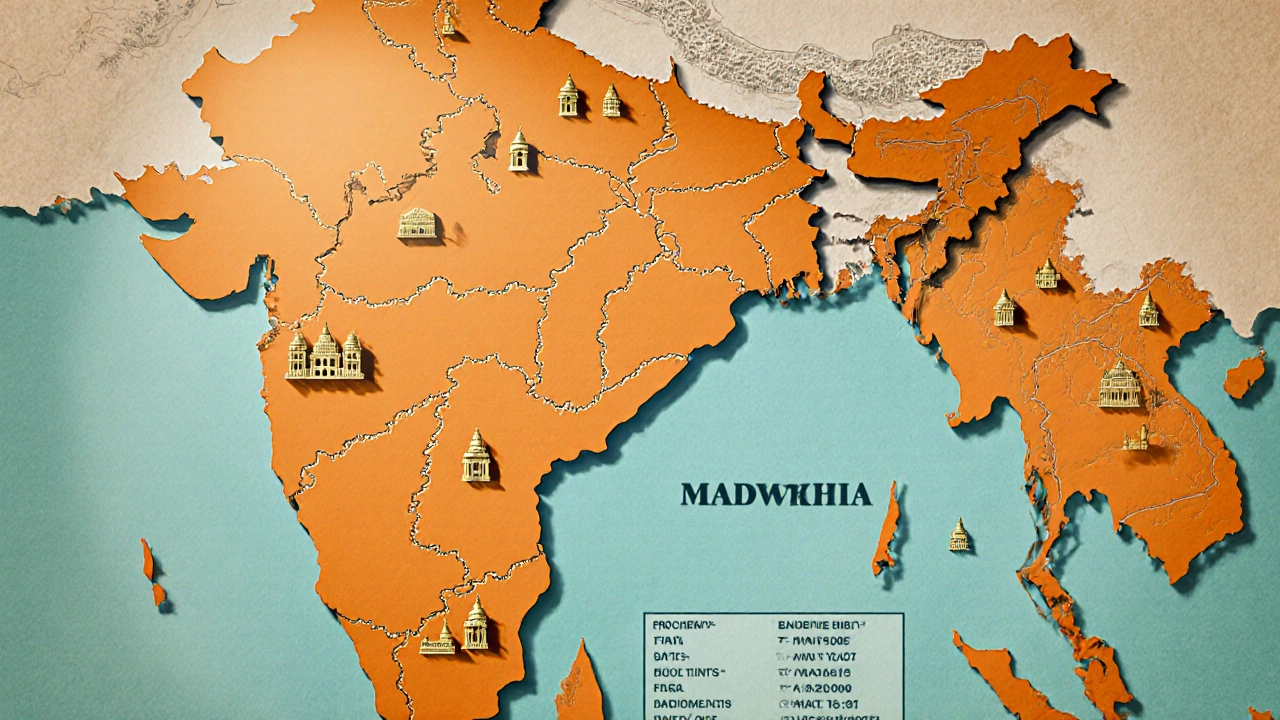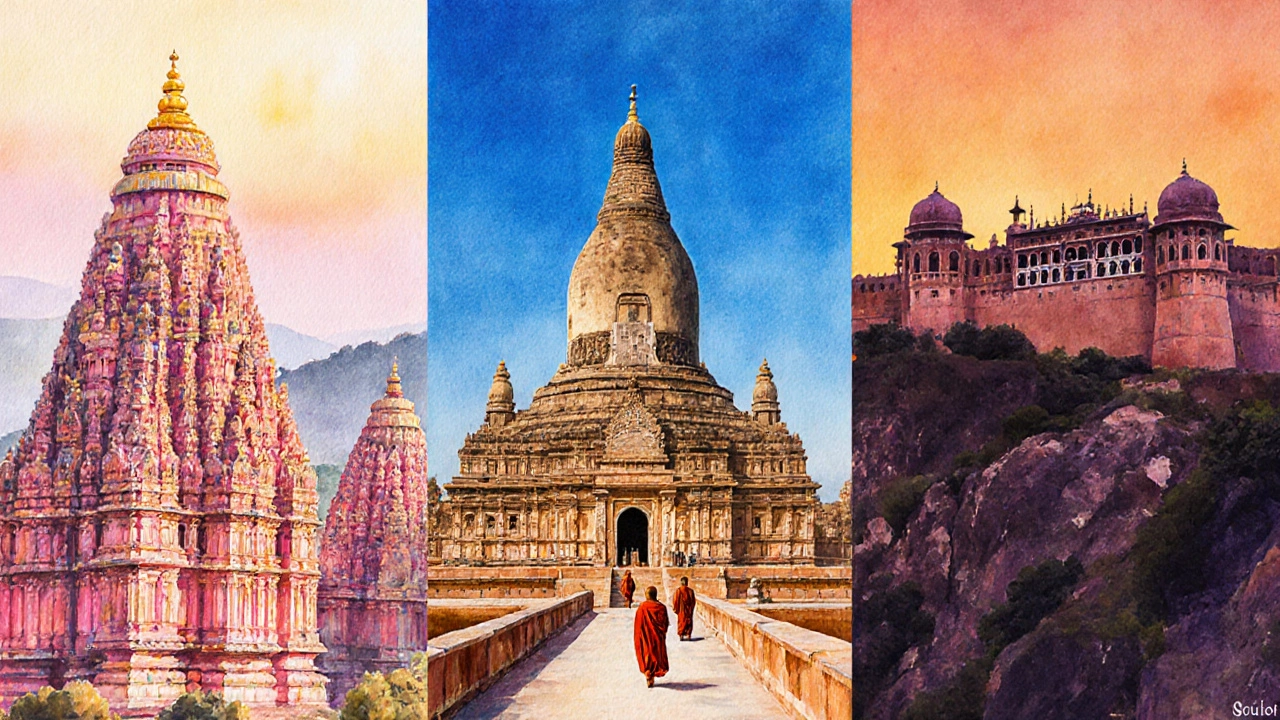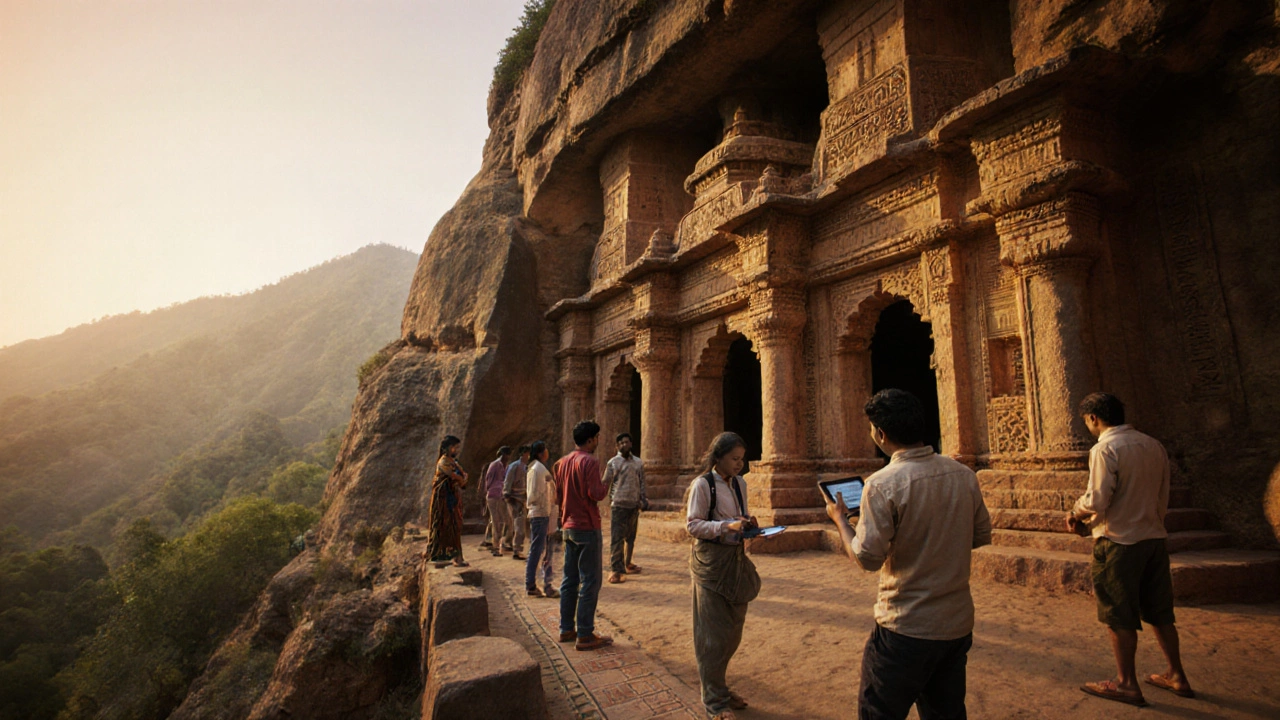Which Indian State Holds the Record for Most Heritage Sites?
 Oct, 10 2025
Oct, 10 2025
Indian Heritage Sites Explorer
| State | Total Protected Sites | UNESCO Sites | State-Protected |
|---|
Bars represent relative numbers of heritage sites per state
India’s cultural landscape is dotted with thousands of monuments, forts, temples, and ruins. Travelers often wonder which state offers the richest concentration of these treasures. The answer isn’t a surprise for history buffs -MadhyaPradesh tops the list, boasting more heritage sites than any other Indian state.
Key Takeaways
- MadhyaPradesh has the highest total of heritage sites, with over 1,500 protected monuments.
- The state leads in both UNESCO World Heritage Sites (5) and State‑protected monuments.
- UttarPradesh and Rajasthan follow closely, each with strong clusters of Mughal and Rajput architecture.
- Heritage site counts are compiled from the Archaeological Survey of India (ASI) and state tourism departments.
- Travel tips for heritage lovers: plan visits by region, use state‑run heritage circuits, and check seasonal access.
Heritage sites in India are cultural properties that have been officially recognized for their historical, artistic, or architectural significance. The Archaeological Survey of India (ASI) maintains a national register, while each state maintains its own list of protected monuments and sites.
How Heritage Sites Are Counted
Two main bodies compile the numbers:
- The Archaeological Survey of India (ASI) records nationally protected monuments, including UNESCO World Heritage Sites.
- State tourism departments maintain state‑protected monuments, which often include lesser‑known forts, stepwells, and archaeological sites.
When we talk about “most heritage sites,” we add both national and state‑protected counts. The figures below reflect the latest 2024 data released by ASI and the respective state bodies.

Top 5 Indian States by Heritage Site Count (2024)
| State | Total Protected Heritage Sites | UNESCO World Heritage Sites | State‑Protected Monuments | Notable Heritage Clusters |
|---|---|---|---|---|
| Madhya Pradesh | 1,527 | 5 (Khajuraho, Sanchi, etc.) | 1,522 | Bundelkhand forts, Narmada valleys |
| Uttar Pradesh | 1,312 | 3 (Agra, Fatehpur Sikri, Taj Mahal) | 1,309 | Ganges ghats, Mughal capitals |
| Rajasthan | 1,208 | 2 (Hill Forts of Rajasthan) | 1,206 | Desert palaces, Rajput forts |
| Karnataka | 1,043 | 3 (Hampi, Pattadakal, etc.) | 1,040 | Vijayanagara ruins, Western Ghats temples |
| Tamil Nadu | 982 | 2 (Great Living Chola Temples) | 979 | Dravidian temple complexes, coastal forts |
Why Madhya Pradesh Leads the Pack
The central location of MadhyaPradesh has made it a cultural crossroads for centuries. Several factors push its numbers higher than any other state:
- Geographic spread: The state spans three major river basins (Narmada, Tapti, and Chambal), each fostering distinct settlement patterns.
- Rich dynastic history - from the Mauryas and Guptas to the Paramaras, the Mughals, and the Marathas - left a layered architectural legacy.
- Proactive state heritage policies that catalog every archaeological mound, often turning lesser‑known sites into tourist circuits.
Examples include the UNESCO‑listed Khajuraho Group of Monuments, the Buddhist stupas at Sanchi, and the rock‑cut temples of Udayagiri. Even remote sites like the Bagh Caves in the Satpura range count toward the total.

Regional Highlights for Travelers
If you’re planning a heritage road‑trip, consider grouping sites by region. Below are three practical itineraries that let you soak up the best of each top state.
Madhya Pradesh - Central Circuit
- Day1‑2: Khajuraho - explore the Western, Eastern, and Southern clusters of temples.
- Day3: Sanchi - visit the Great Stupa and the surrounding monasteries.
- Day4‑5: Gwalior Fort and the nearby Man Singh Palace.
- Day6: Bundelkhand - tour the forts of Chanderi and Orchha.
Uttar Pradesh - Ganges Heritage Trail
- Day1‑2: Agra - TajMahal, Agra Fort, and Fatehpur Sikri.
- Day3‑4: Varanasi - Kashi Vishwanath Temple, ghats, and the ancient Banaras Hindu University campus.
- Day5: Lucknow - the Bara Imambara and Rumi Darwaza.
Rajasthan - Desert Fort Experience
- Day1‑2: Jaipur - Amber Fort, City Palace, and Jantar Mantar.
- Day3‑4: Jodhpur - Mehrangarh Fort and the historic clock tower.
- Day5‑6: Udaipur - City Palace and the UNESCO‑recognized Hill Forts.
Preservation Challenges and What You Can Do
Even with a high count, many sites face threats from weathering, unregulated tourism, and inadequate funding. Here’s how visitors can help:
- Choose guided tours run by state heritage departments - they often direct fees toward conservation.
- Respect signage, avoid climbing on fragile structures, and use designated pathways.
- Support community‑based initiatives that train locals as custodians of nearby monuments.
These small actions keep the sites vibrant for future generations and ensure that the numbers we celebrate remain sustainable.
Frequently Asked Questions
Which state has the most UNESCO World Heritage Sites?
MadhyaPradesh and Rajasthan each have five UNESCO sites, but MadhyaPradesh edges ahead when you combine national and state listings.
How often are heritage site counts updated?
The ASI releases an official register every two years, while state tourism departments issue annual updates on newly protected monuments.
Are all heritage sites open to the public?
Most are, but some are in remote locations or under restoration. Always check local visitor information before planning a trip.
What’s the best time of year to visit heritage sites in central India?
October to March offers cooler weather and clearer skies, ideal for exploring outdoor monuments.
Can I volunteer at heritage sites?
Yes - many state tourism boards run volunteer programs for site maintenance, documentation, and community outreach.